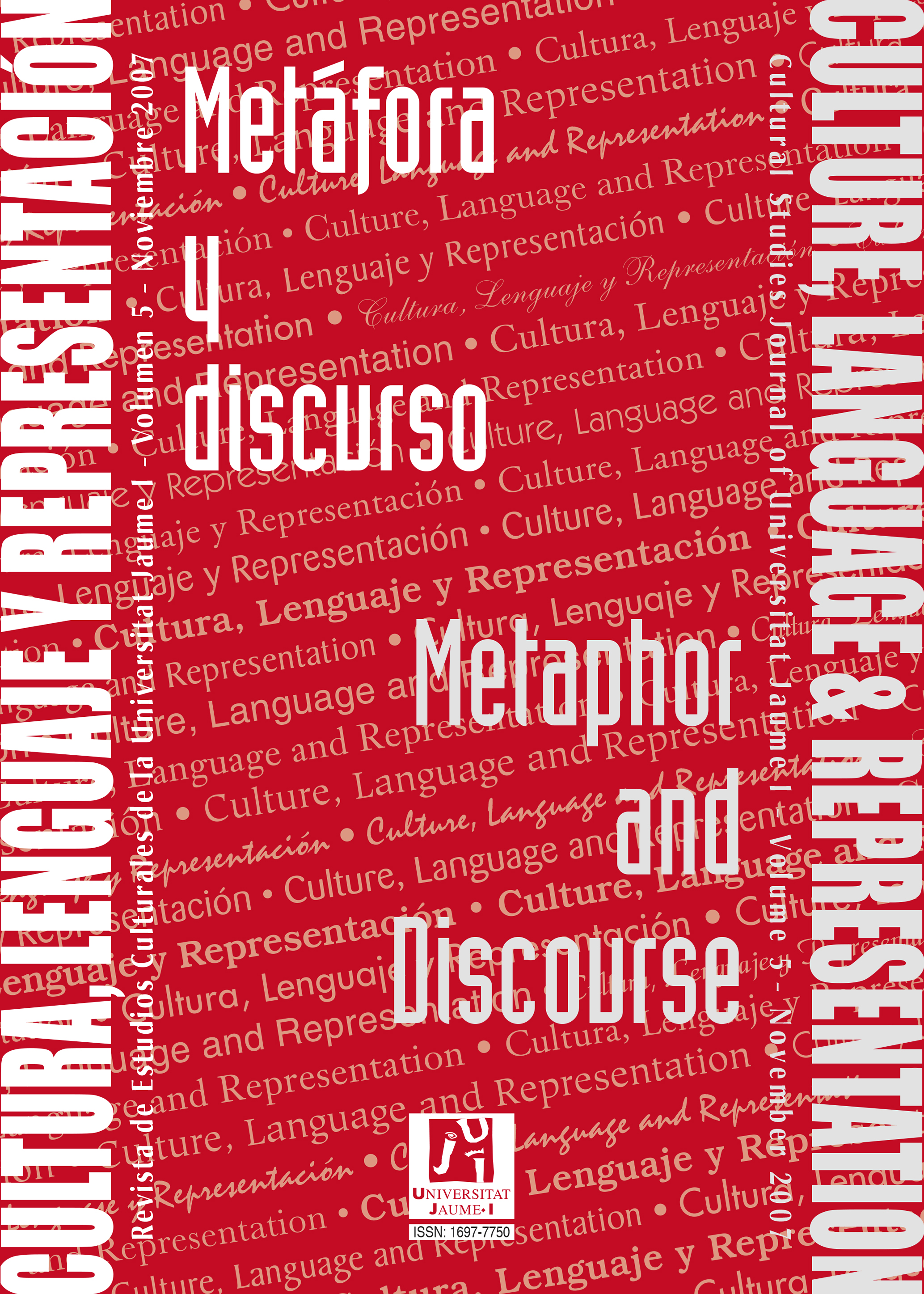Defining Semantic and Prosodic Tools for the Analysis of Live Metaphor Uses in Spoken Corpora
Contenido principal del artículo
Resumen
Considering metaphors as hypercoding elements in a genetic outlook, a corpus of twenty six scripted interviews, in British and American English and in French was labelled morphosyntactically and with lsa (latent semantic analysis) coefficients which assess semantic “distance” between words (grammatical words included) and the general topic of the discourse — music in our case. The corpus was first hand-searched then searched by XSLT stylesheets for potentially live metaphors using the lsa tags.
Metaphors in oral discourse differ from those in written discourse in more than one way: They are more spontaneous when innovative, less contrived and linked are endowed with a recognisable intonation. The scrutiny of all the live metaphors trawled from the corpus was carried out and resulted in the establishment of prosodic patterns for assessing metaphoricity. The pattern is not live-metaphor specific, but used along with other factors such as semantic distance, being a good enough indicator for both languages. As a case study, [MUSIC IS A PATH/JOURNEY] metaphor uses are looked into.
An intended live metaphor corresponds to a specific attitude and emotion on the speaker’s part. Maturity and Tonus (Piot 2002) are two concepts that can account for the prosodic contours. This feature may be added to the pattern bundle for metaphors which Lynne Cameron and Alice Deignan have coined Metaphoreme. Establishing what is metaphorically alive is a fruitful way of contrasting how cognitive models at play in metaphor are translated in oral discourse and may be seen as the ecology of metaphors, seeing how they coexist in their cognitive milieu. French, English and American radio stations, France Musique, Radio 3, and NPR provided material to test with some success the efficiency of the prosodic template.
Descargas
Detalles del artículo
Se utiliza una licencia de derechos de autor CREATIVE COMMONS de acceso abierto.
Aquellos autores/as cuyos trabajos sean publicados por esta revista esta revista, aceptan los términos siguientes:
Concretamente mediante las siguientes acciones:
- - Los autores/as conservarán sus derechos de autor y garantizarán a la revista el derecho de primera publicación de su obra, el cuál estará simultáneamente sujeto a la Licencia de reconocimiento de Creative Commons CC BY SA que permite a terceros compartir la obra siempre que se indique su autor y su primera publicación esta revista.
- - Cumplimiento de un porcentaje mínimo del 40% de mujeres como revisoras de los trabajos enviados a la revista.
- - Los autores/as conservarán sus derechos de autor y garantizarán a la revista el derecho de primera publicación de su obra, el cuál estará simultáneamente sujeto a la Licencia de reconocimiento de Creative Commons CC BY SA que permite a terceros compartir la obra siempre que se indique su autor y su primera publicación esta revista.
- - Los autores/as podrán adoptar otros acuerdos de licencia no exclusiva de distribución de la versión de la obra publicada (p. ej.: depositarla en un archivo telemático institucional o publicarla en un volumen monográfico) siempre que se indique la publicación inicial en esta revista.
- - Se permite y recomienda a los autores/as difundir su obra a través de Internet (p. ej.: en archivos telemáticos institucionales o en su página web) antes y durante el proceso de envío, lo cual puede producir intercambios interesantes y aumentar las citas de la obra publicada.


